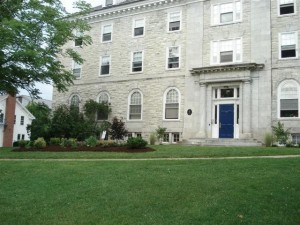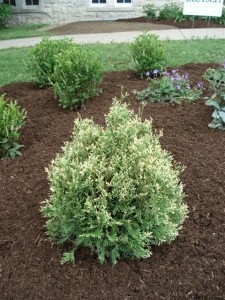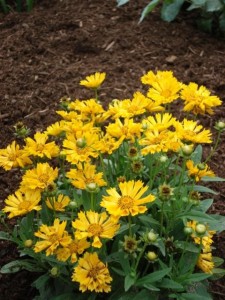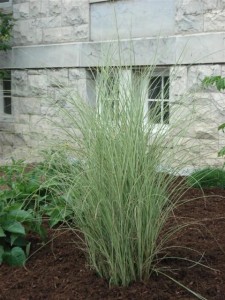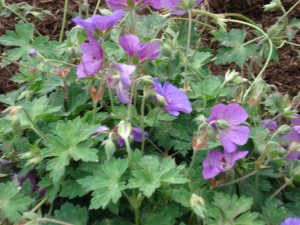You’ll just have to trust us. The east (Battell beach) side of Pearson Hall consisted of 8′ evergreen yew hedges, smashed in the center from snow over the last several winters, with a large Burning Bush sticking out of the center, easily reaching into the second story of the building. I’m sure it was all quite lovely many years ago, but foundation plantings of that era relied overmuch on frequent clipping and shearing to maintain proper size, and even then, can only be maintained at manageable levels for so long.
(Most shrubs need to grow, of course, and lose their inner leaves or needles as time goes on. Even if you clip most of a yew back each year, that new inch of so adds up over the decades. The only exception I have heard to this rule is boxwood hedges around temples in Japan, pruned to the same exact shape for so long that a child can walk atop, the growth being so dense and congested.)
Many of the landscapes we’ve redone over the last five years have been that of almost total removal, with smaller, more manageable plantings at key locations. Not only does this lower maintenance, but, if you haven’t noticed, we’ve got some spectacular buildings on campus, and removing the multistory vegetation surrounding them allows the architecture to shine like the day it was born.
Pearson Hall was like that. A great building, hidden in plain sight. The challenge here, though, was that what we call ‘north campus’ is relatively plain,views notwithstanding. So the goal was to make a great planting, bring some color to a new area of campus, while still showing off the facade of Pearson. Dave Berthiaume, the crew chief for North campus, and I made several sketches of the front entrance, trying and failing to install a flower garden and show a building at the same time. Finally, we came up with the idea to pull the planting out, and put all the color in front of the building, in a new bed next to the sidewalk.
Not the greatest picture, but let’s just go with it. On either side of the door are two large shrubs, Seven Son Flower, surrounded by Mugo Pine (hopefully a dwarf variety, but one should never turn their back on a Mugo Pine.) The large shrubs will grow up and over the door, framing the entrance, but not overpower the building.
It’s the bed out front with all the color. The little red thing in the middle is actually a tree, a Japanese Maple. Readers from the south may not understand how special this is to us up here, but we love the red leaves, and try and fill the few microclimates we have available to us with this little marginally hardy tree. And imagine the red leaves in front of the building. It’ll get about 12′ tall and wide in the north country here, 20′+ further south.
Surrounding the little tree are some shrubs, and filling the holes in between are perennials. It’s a trick I use all over campus. One of the secrets to landscaping is a rule: If it looks good when it goes in, it’s too crowded. Trees and shrubs need room, more room than impatient idiots like me want to give them, so instead of wasting plants I give them proper room, and fill the spaces in between with perennials. As the shrubs grow, the perennials can be dug and divided, moved forward in the bed, or put somewhere else on campus.
Even with all of the flowers gone some day, the shrubs Dave and I picked will easily stand on their own. A couple of dwarf conifers anchor either end. A ‘Jane Kluis’ Japanese Red Pine, and one of my favorites, a ‘Sherwood Frost’ Arborvitae, like the White Cedar in the swamps around here, but with new growth emerging a snow white.
A couple of deciduous shrubs round out the structure, a blue leafed form of Fothergilla (‘Blue Shadow’), and another favorite of mine, Compact Summersweet.
The rest of the space is filled with perennials. It is tricky to buy perennials for a planting. The temptation is to grab everything that looks good, thereby assuring a glorious two or three weeks of color, and a lot of green leaves the rest of the summer. We tried to pick a broad range of plant times, but the German language school in session when we planted this may have a bit of a bonus.
There is more in there, but I took the best pictures. I keep obsessive records on what we plant, like what I wish I’d done at my own house (50+ varieties of daylilies, some with names…), so if you ever have the need to know what something is, just get in touch.
